Discover the allure of London’s iconic attractions through captivating photographs. From the majestic Tower Bridge to the regal Buckingham Palace, immerse yourself in the city’s rich history and vibrant atmosphere. Explore the stunning skyline, bustling markets, and world-class museums through striking images that showcase the essence of London.
Whether you’re seeking inspiration or planning your visit, find everything you need to know about the captivating photographs of London’s top attractions.
What to Know About London
Historical Significance
London has a rich history that spans over two millennia. It was founded by the Romans in AD 43 and has since grown into a global hub of politics, trade, and culture. The city has witnessed significant events such as the Great Fire of London, the Industrial Revolution, and World War II.
Landmarks and Attractions
London is home to iconic landmarks that draw millions of visitors each year. Some must-visit attractions include the Tower of London, Buckingham Palace, the British Museum, the Houses of Parliament (with Big Ben), the London Eye, and St. Paul’s Cathedral. The city’s skyline is also adorned with modern architectural marvels like The Shard and the Gherkin.
Cultural Diversity
London is known for its multicultural environment, with residents from diverse backgrounds and cultures. This diversity is reflected in the city’s cuisine, festivals, music, and art scenes. You can explore neighborhoods like Chinatown, Little India, and Brick Lane to experience the city’s multicultural fabric.
Museums and Galleries
London boasts world-class museums and art galleries. The British Museum, the National Gallery, the Victoria and Albert Museum, and the Tate Modern are just a few examples of institutions that house renowned art collections, historical artifacts, and exhibitions.
Theater and Performing Arts
London’s West End is globally recognized as a theater district, hosting a wide array of musicals, plays, and performances. From long-running shows like “The Phantom of the Opera” to new productions, there is always something to enjoy on the stages of London’s theaters.
Parks and Green Spaces
Despite being a bustling city, London offers plenty of green spaces and parks. Hyde Park, Regent’s Park, and Richmond Park are among the largest and most popular parks, providing opportunities for leisure activities, picnics, and relaxation.
Transportation
London has an extensive public transportation system, including the famous Underground (the Tube), buses, and trams. The Oyster card is commonly used for convenient and cost-effective travel within the city. London’s iconic black cabs and double-decker buses are also emblematic of the city’s transport system.
Events and Festivals
London hosts a wide range of events and festivals throughout the year, catering to various interests. From the Notting Hill Carnival and the Changing of the Guard at Buckingham Palace to the New Year’s Eve fireworks and numerous music festivals, there’s always something happening in the city.
Shopping and Dining
London is a shopper’s paradise, offering a diverse range of shopping options. From luxury department stores like Harrods and Selfridges to vibrant markets like Camden Market and Borough Market, you can find everything from high-end fashion to unique street food.
Sports
London has a thriving sports scene. The city hosted the Olympic Games in 2012 and is home to renowned sports venues like Wembley Stadium, Lord’s Cricket Ground, and Wimbledon. Football (soccer), rugby, cricket, and tennis are among the most popular sports in the city.
Best Attractions in London 2023
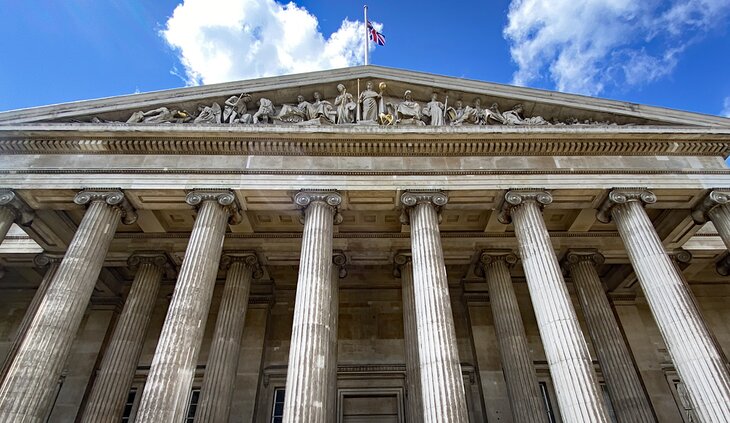
The British Museum
The British Museum
This world-renowned museum houses a vast collection of art and artifacts from civilizations across the globe, spanning thousands of years of human history.
The British Museum is home to an exceptional collection of antiquities, housing over 13 million artifacts from ancient civilizations worldwide. With its vast and diverse range of priceless objects from Assyria, Babylonia, China, Europe, and beyond, visitors may find it overwhelming to decide where to begin their exploration of this expansive attraction.
Among the museum’s most renowned exhibits are the Elgin Marbles from the Parthenon, which spark debate and fascination, the Rosetta Stone, a key to deciphering ancient Egyptian hieroglyphs, the colossal bust of Ramesses II, intriguing Egyptian mummies, and the breathtaking Mildenhall Treasure, a Roman silver hoard from the 4th century.
In addition to the extensive on-site bookshop, offering an extensive selection of titles on ancient history, archaeology, and art history, there are shops catering to various interests. These include a shop with children’s games and souvenirs, as well as another offering replica sculptures and jewelry.
For those with more time to spare, the museum provides a range of lectures and workshops for further engagement and learning. Additionally, there are dining options available, including a restaurant and café, allowing visitors to refuel during their visit.
The British Museum offers an immersive experience for enthusiasts of ancient history, archaeology, and art, providing opportunities to delve deeper into the captivating world of antiquities.
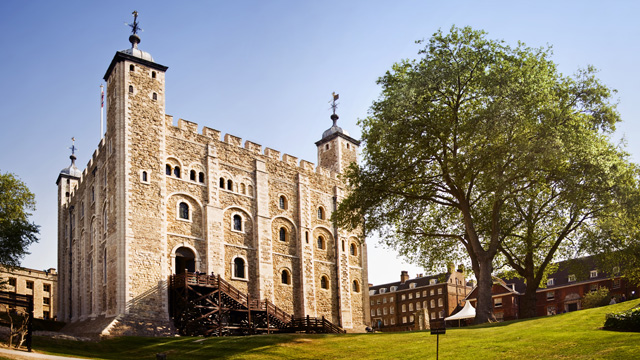
The Tower of London
The Tower of London
A historic castle located on the banks of the River Thames, the Tower of London has served various purposes throughout history, including as a royal palace, prison, and treasury. It is famous for its iconic Crown Jewels and captivating tales of intrigue.

Buckingham Palace
Buckingham Palace
The official residence of the British monarch in London, Buckingham Palace is a must-see landmark. Visitors can witness the Changing of the Guard ceremony and admire the grandeur of the palace’s architecture and gardens.
The Houses of Parliament and Big Ben
This iconic complex is home to the UK’s Parliament, housing the House of Commons and the House of Lords. Big Ben, the famous clock tower, is a symbol of London and stands tall nearby.

The London Eye
The London Eye
A giant Ferris wheel located on the South Bank of the River Thames, the London Eye offers panoramic views of the city’s skyline. It has become an iconic symbol of London and a popular tourist attraction.
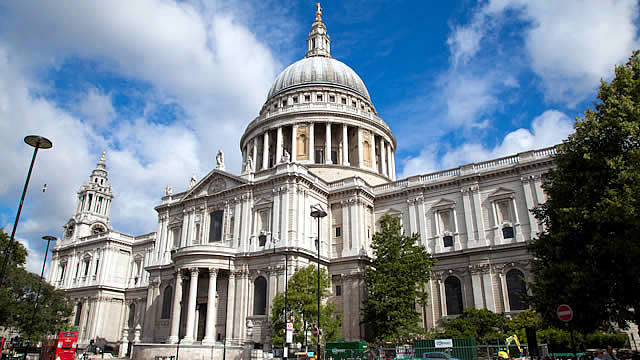
St. Paul’s Cathedral
St. Paul’s Cathedral
A masterpiece of architecture, St. Paul’s Cathedral is an Anglican cathedral that showcases magnificent design and holds historical significance. Visitors can explore its stunning interior, climb to the dome’s top for panoramic views, and learn about its rich history.
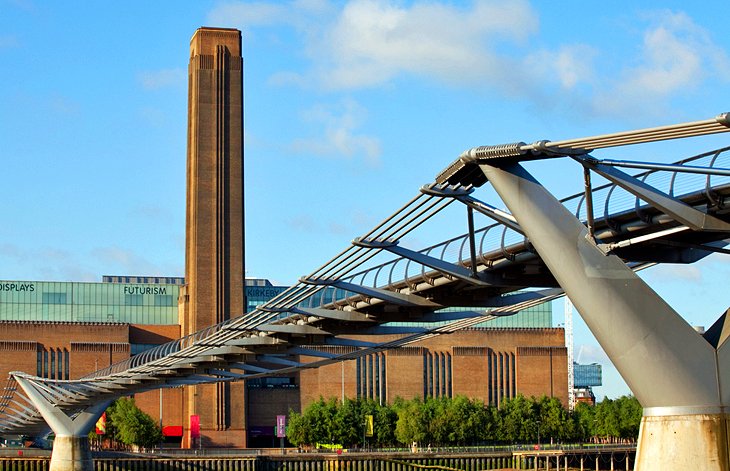
The Tate Modern
The Tate Modern
Situated in a former power station on the banks of the River Thames, the Tate Modern is a contemporary art museum. It houses a vast collection of modern and contemporary artworks from around the world, including paintings, sculptures, and installations.
No art enthusiast’s visit to London would be complete without exploring its most remarkable art museums: the renowned Tates. Situated on opposite sides of the Thames, Tate Britain and Tate Modern collectively house one of the world’s most significant art collections.
Originally established in 1897 as the foundation for a national assortment of noteworthy British art, the gallery continued to expand its acquisitions, necessitating more space to showcase its growing collections. This led to the creation of Tate Britain, located on the north side of the Thames in Millbank, serving as the permanent home for its esteemed collection of historic British paintings.
On the other side of the river, a transformed power station now houses the modern art collections. Art enthusiasts can easily spend an entire day exploring both sites, conveniently connected by a high-speed ferry. Alternatively, a stroll across the Millennium Bridge, a pedestrian bridge linking the two riverbanks near the Tate Modern, offers not only convenient access but also breathtaking views of the cityscape.
Whether you choose to immerse yourself in the classical works at Tate Britain or indulge in contemporary art at Tate Modern, the experience promises to be a visual feast for art lovers seeking inspiration and appreciation in London.
The Natural History Museum
A fascinating museum dedicated to natural history, the Natural History Museum boasts an impressive collection of specimens, including dinosaur skeletons, fossils, gemstones, and interactive exhibits that cater to visitors of all ages.
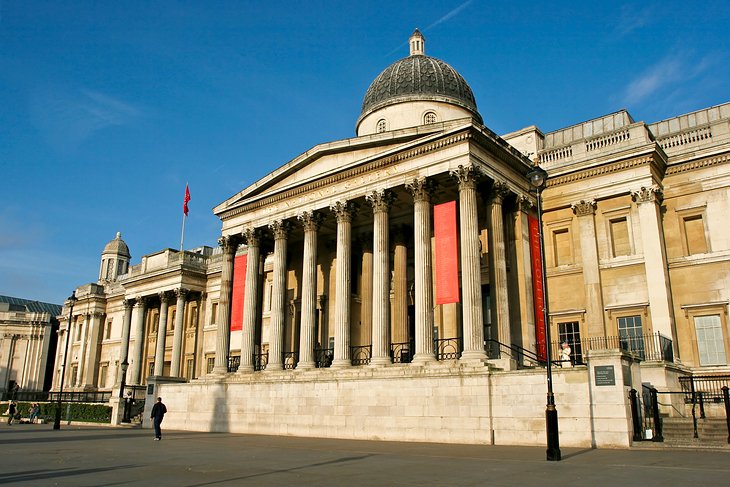
The National Gallery
The National Gallery
Located in Trafalgar Square, the National Gallery is an art museum that houses a vast collection of European paintings from the 13th to the 19th centuries. It is home to masterpieces by renowned artists such as Van Gogh, Da Vinci, and Monet.
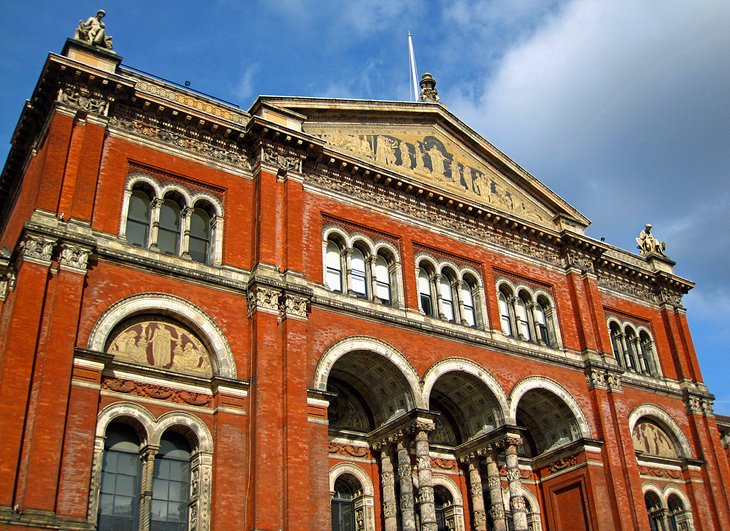
The Victoria and Albert Museum
The Victoria and Albert Museum
Known as the V&A, this museum is the world’s largest museum of art and design. It showcases a diverse range of exhibits, including sculpture, textiles, fashion, ceramics, and photography, spanning over 5,000 years of human creativity.
These attractions offer visitors a chance to explore London’s rich history, cultural heritage, and artistic treasures. Each site provides a unique experience and contributes to the vibrant tapestry of the city’s attractions.
The Victoria and Albert Museum, also known as the V&A, forms part of a cluster of museums located in South Kensington, which includes the Natural History Museum and the Science Museum. Established in 1852, the V&A covers an expansive area of nearly 13 acres, featuring 145 galleries that span an impressive 5,000 years of art and related artifacts.
The museum showcases a diverse range of exhibits, including ceramics and glass, textiles and costumes, silver and jewelry, ironwork, sculpture, prints, and photographs. These exhibits are thoughtfully organized into four main categories: Asia; Furniture, Textiles, and Fashion; Sculpture, Metalwork, Ceramics, and Glass; and Word and Image.
Given the size of the museum, it is practically impossible to explore everything in a single visit. To make the most of your time, it is recommended to plan in advance and prioritize the sections that interest you the most. Taking a guided tour of the V&A is highly recommended, with various options available, ranging from general introductory tours to specialized gallery or themed tours. Many of these tours are offered free of charge.
The Main and Garden Cafés within the V&A are not just typical museum eateries; they are architectural marvels in themselves. Intricate details adorn everything from the flooring to the columns to the ceiling, making the dining experience a work of art. The food served is also known for its quality and taste. Additionally, make sure not to miss the opportunity to relax in the serene and visually stunning John Madejski Garden, an oasis amidst the bustling city.
If you happen to be in London on the last Friday of the month (excluding March and December), consider attending the engaging “Friday Late” programs at the V&A. These popular events feature food and drink experiences along with late-night exhibition openings, providing a unique and enjoyable way to experience the museum.
You can find the V&A at the following address: Cromwell Road, Knightsbridge, London.
- YOU MAY ALSO READ>>> How to Pick the Perfect Dell Computer for Your Needs
Tips to Get into London
If you’re planning to get into London, here are some tips to help you with your journey:
- Plan your mode of transportation: London is well-connected and can be accessed by various means of transportation, including flights, trains, buses, and cars. Determine the most convenient and suitable mode of transport based on your location, budget, and preferences.
- Check visa requirements: Depending on your nationality, you may need a visa to enter the UK. Ensure you have the necessary documentation and meet the visa requirements before traveling to London. Visit the official UK government website or consult with your local embassy for the most up-to-date visa information.
- Choose your arrival airport: London has several airports, including Heathrow, Gatwick, Stansted, Luton, and London City Airport. Consider the location, airlines, and flight options available at each airport when planning your journey.
- Research transportation options within London: London has an extensive public transportation system, including the Underground (Tube), buses, and taxis. Familiarize yourself with the different transportation options available and plan your routes accordingly to navigate the city efficiently.
- Purchase an Oyster card or contactless payment: To make traveling on public transport in London more convenient, consider getting an Oyster card or using contactless payment methods like a debit or credit card. These payment options allow for seamless and cashless travel on buses, trains, and the Underground.
- Familiarize yourself with London’s neighborhoods: London is a vast city with diverse neighborhoods, each offering a unique atmosphere and attractions. Research different areas and identify the ones that align with your interests and preferences for accommodation, dining, and sightseeing.
- Plan your itinerary: London has a plethora of attractions, museums, landmarks, and events to explore. Create an itinerary that includes the must-visit places based on your interests and the duration of your stay. Prioritize your top attractions and allocate sufficient time for each visit.
- Purchase tickets in advance: For popular attractions, it is advisable to purchase tickets in advance, especially during peak tourist seasons. This can help you skip the lines and ensure entry to the attractions of your choice. Check the official websites of attractions for ticket options and availability.
- Stay updated on transportation disruptions: London’s transportation network occasionally experiences disruptions or planned maintenance work. Stay informed about any scheduled disruptions or changes in service to avoid inconvenience and plan alternative routes if necessary.
- Embrace the local culture: London is a vibrant and diverse city with a rich cultural heritage. Immerse yourself in the local culture, try traditional cuisine, explore local markets, and engage with the friendly residents to make the most of your London experience.
Remember to stay informed about the latest travel advisories, follow local regulations and guidelines, and prioritize your safety and well-being during your visit to London.







